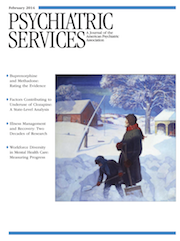Medication-Assisted Treatment With Buprenorphine: Assessing the Evidence
Abstract
Objective
Buprenorphine maintenance treatment (BMT) and methadone maintenance treatment (MMT) are pharmacological treatment programs for individuals with opioid use disorders. MMT is discussed in a companion article. This article describes BMT and reviews available research on its efficacy.
Methods
Authors reviewed meta-analyses, systematic reviews, and individual studies of BMT from 1995 through 2012. Databases surveyed were PubMed, PsycINFO, Applied Social Sciences Index and Abstracts, Sociological Abstracts, Social Services Abstracts, and Published International Literature on Traumatic Stress. They chose from three levels of evidence (high, moderate, and low) based on benchmarks for the number of studies and quality of their methodology. They also described the evidence of service effectiveness.
Results
Sixteen adequately designed randomized controlled trials of BMT indicated a high level of evidence for its positive impact on treatment retention and illicit opioid use. Seven reviews or meta-analyses were also included. When the medication was dosed adequately, BMT and MMT showed similar reduction in illicit opioid use, but BMT was associated with less risk of adverse events. Results suggested better treatment retention with MMT. BMT was associated with improved maternal and fetal outcomes in pregnancy, compared with no medication-assisted treatment. Rates of neonatal abstinence syndrome were similar for mothers treated with BMT and MMT during pregnancy, but symptoms were less severe for infants whose mothers were treated with BMT.
Conclusions
BMT is associated with improved outcomes compared with placebo for individuals and pregnant women with opioid use disorders. BMT should be considered for inclusion as a covered benefit.



